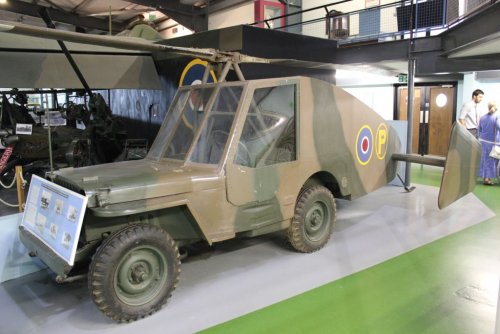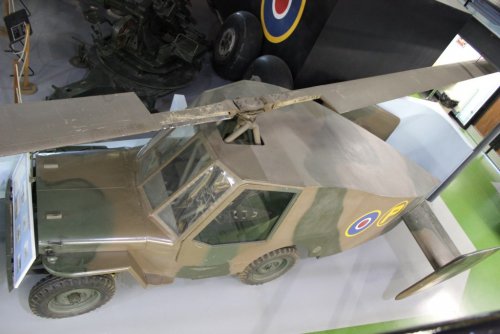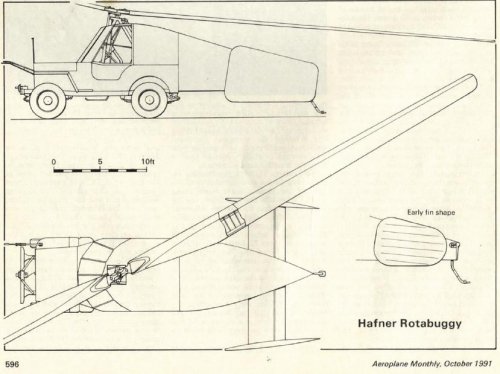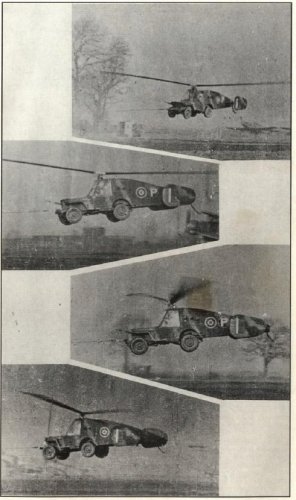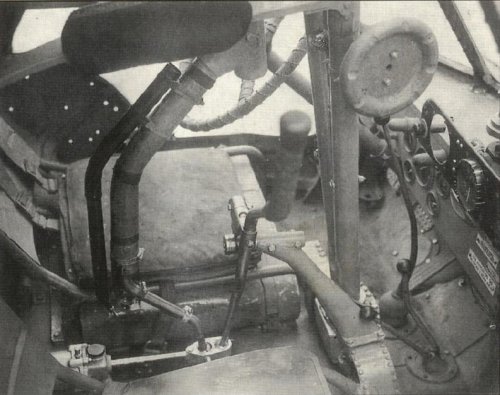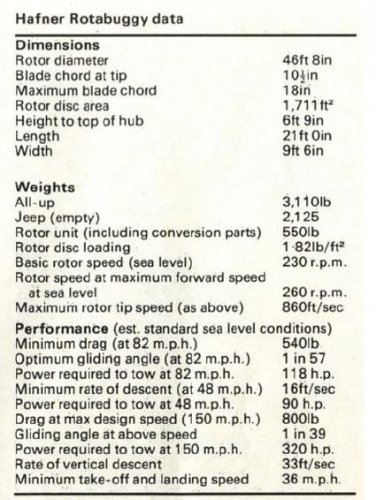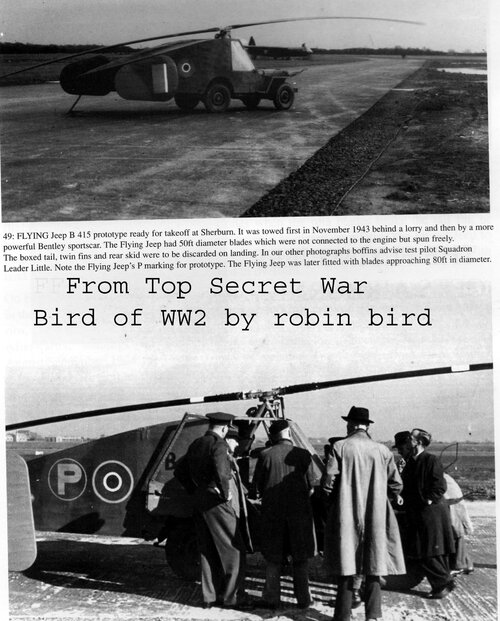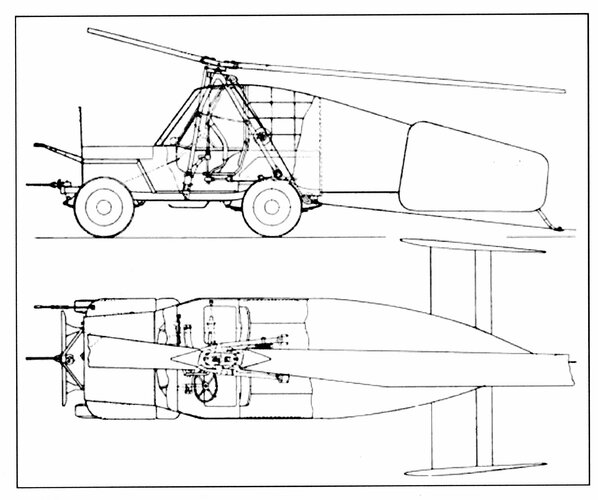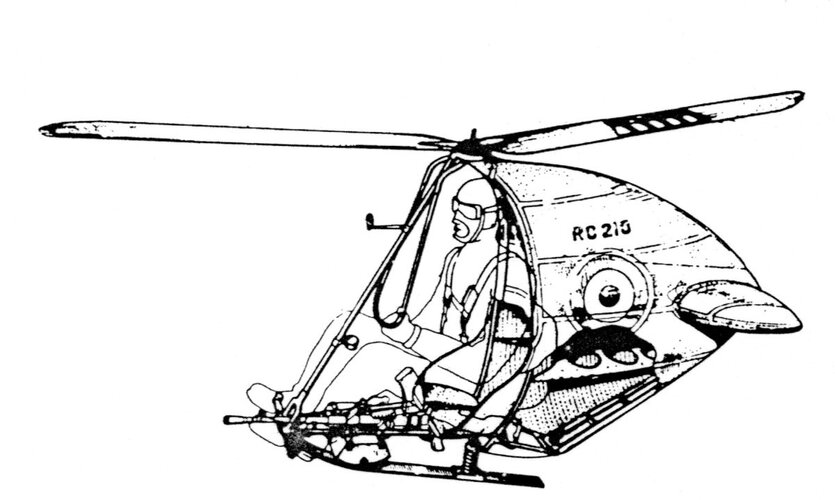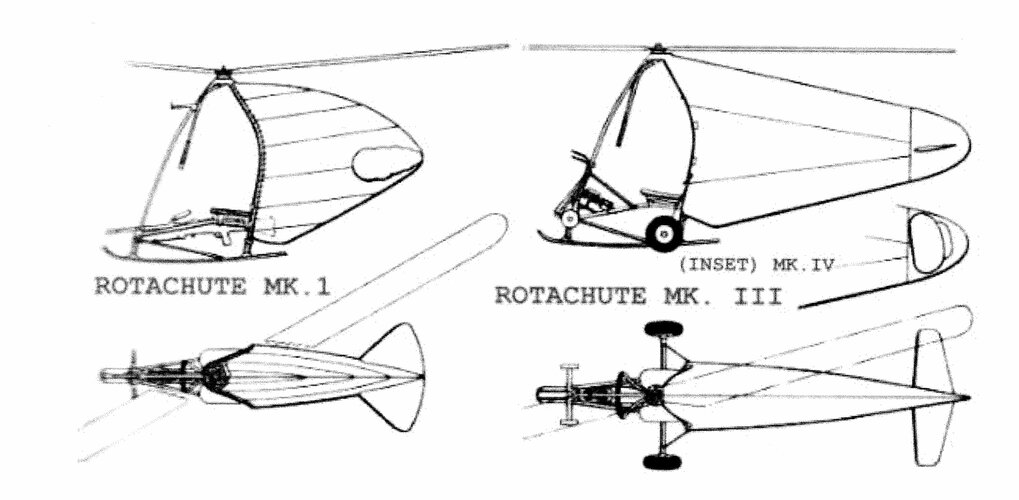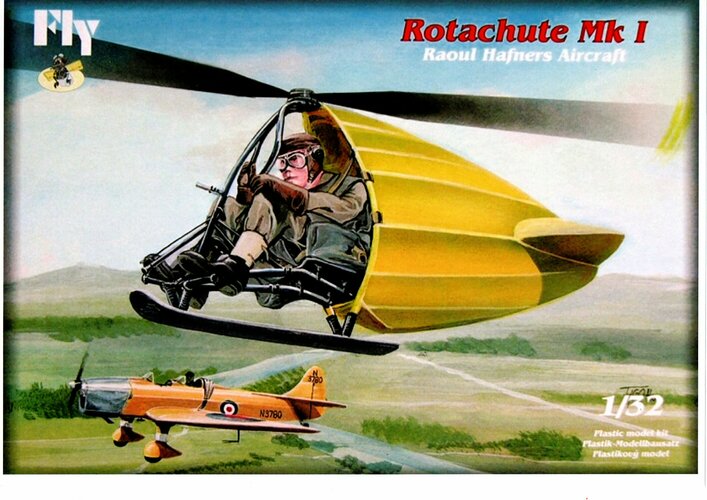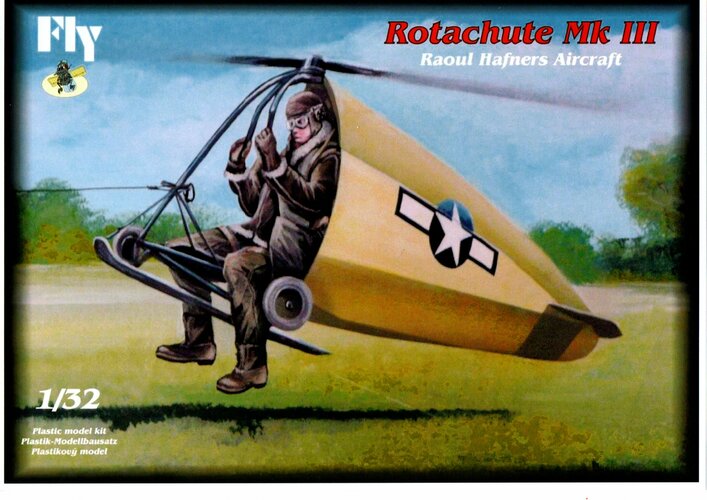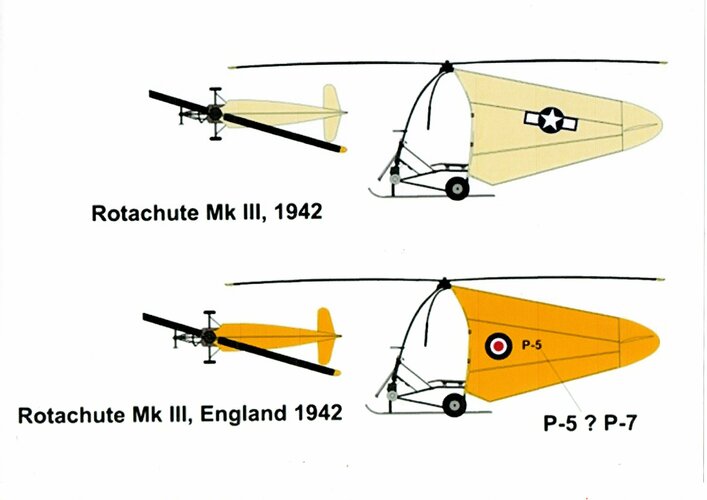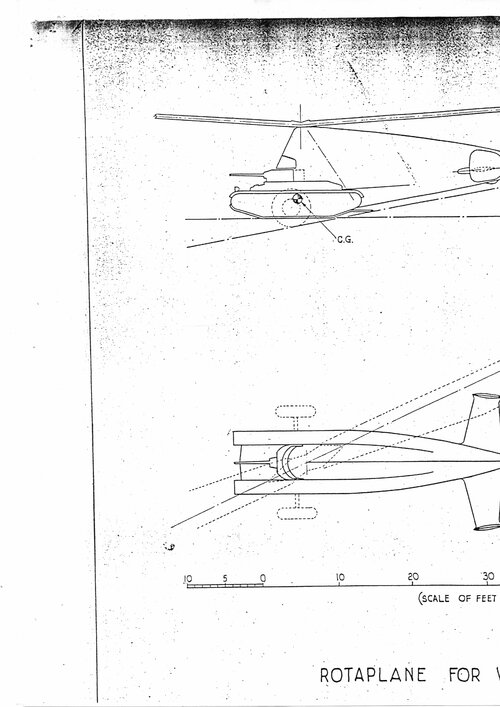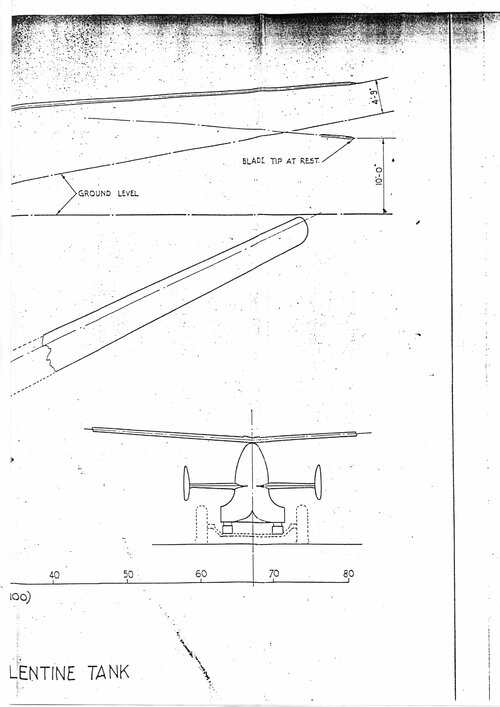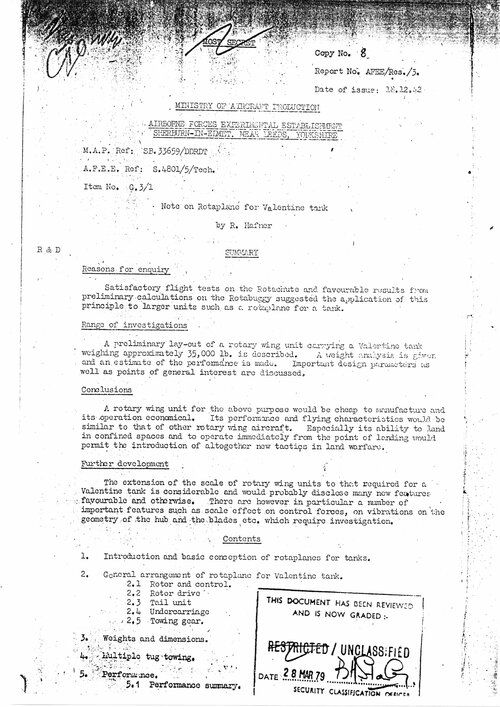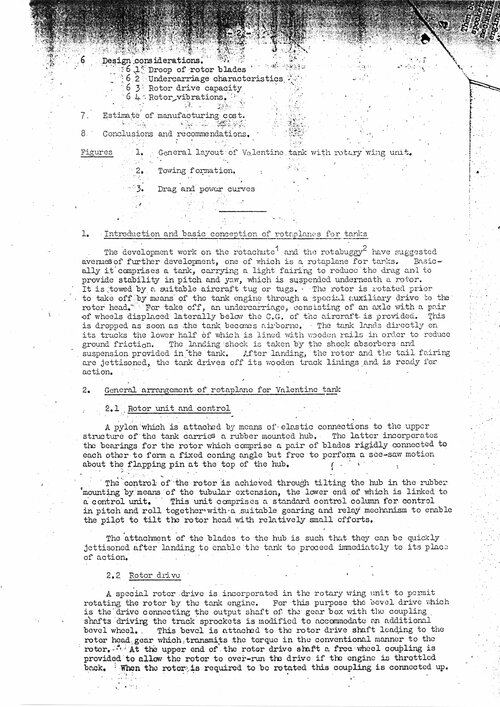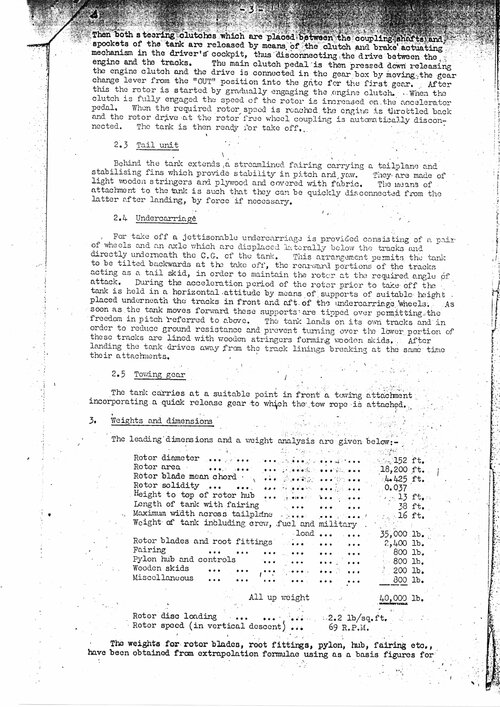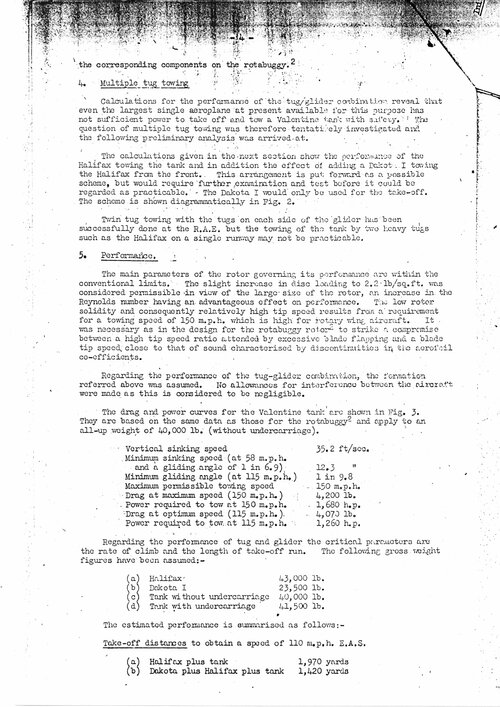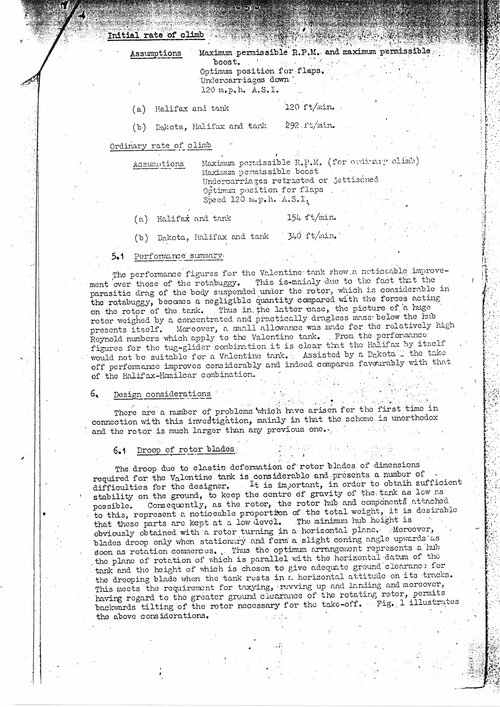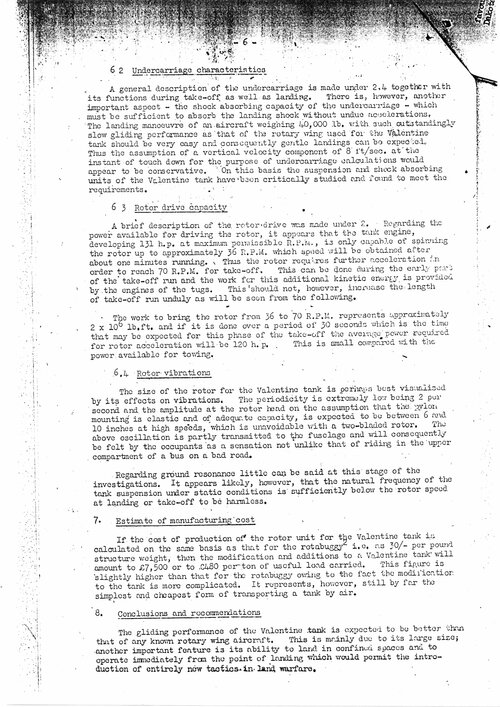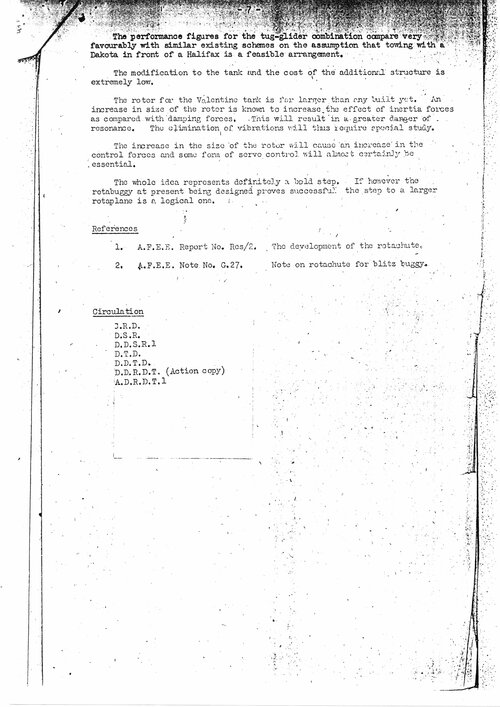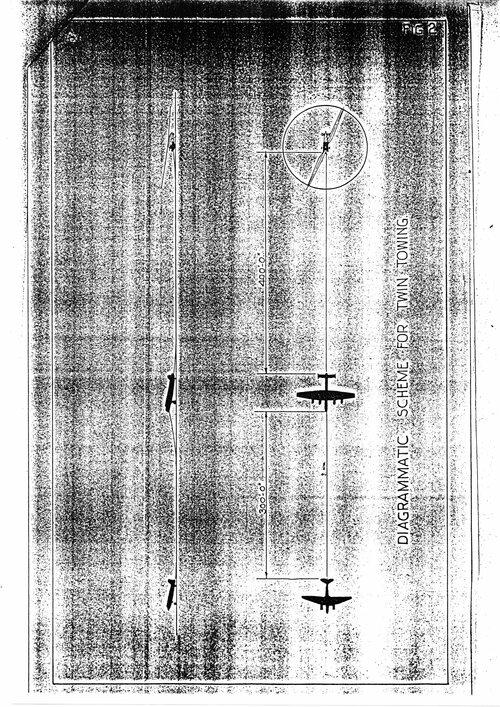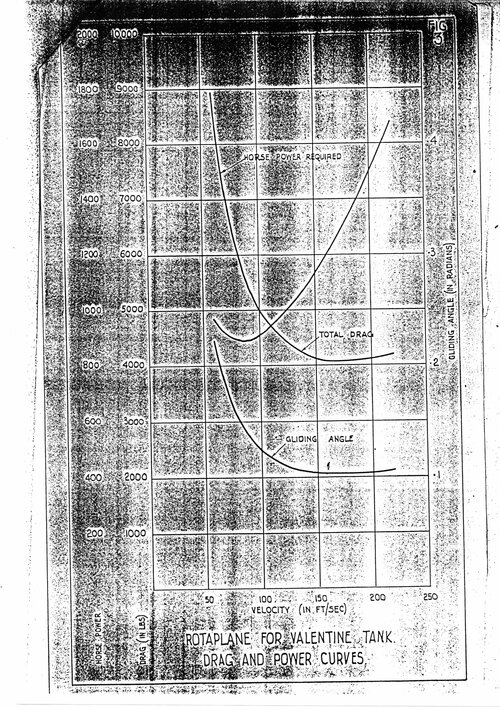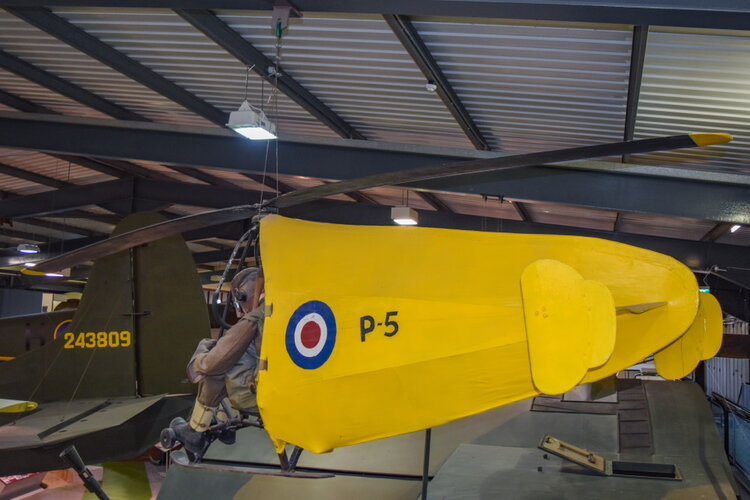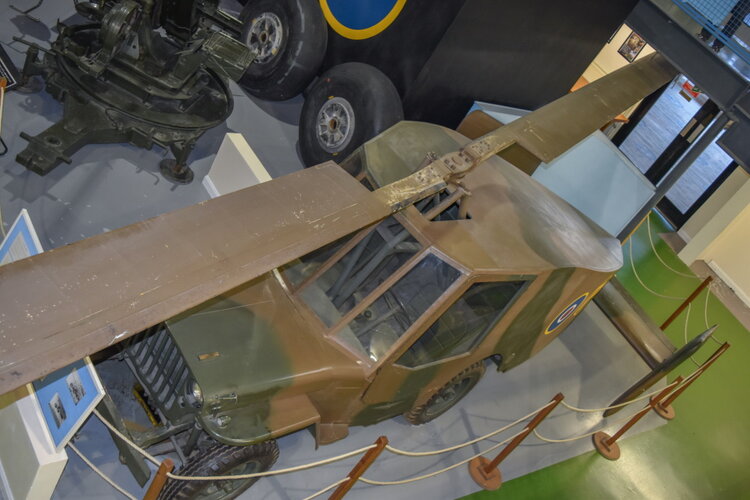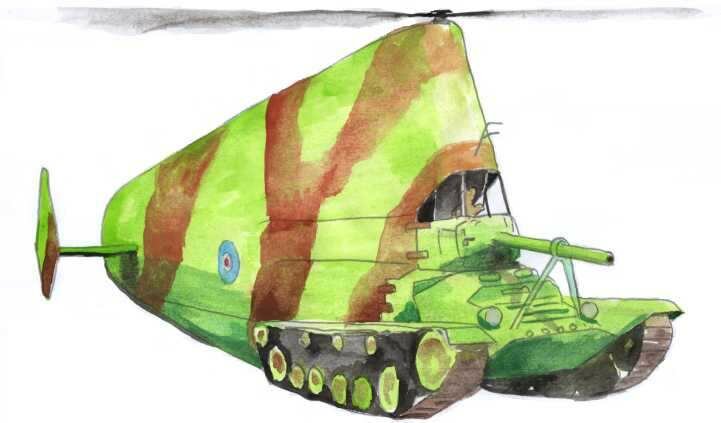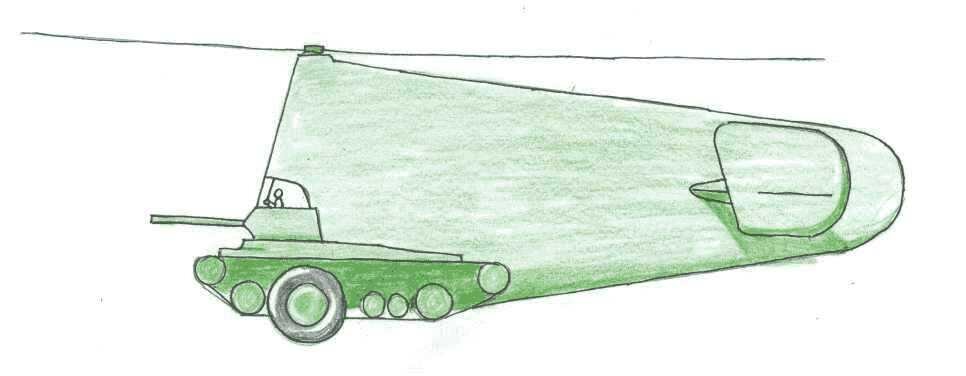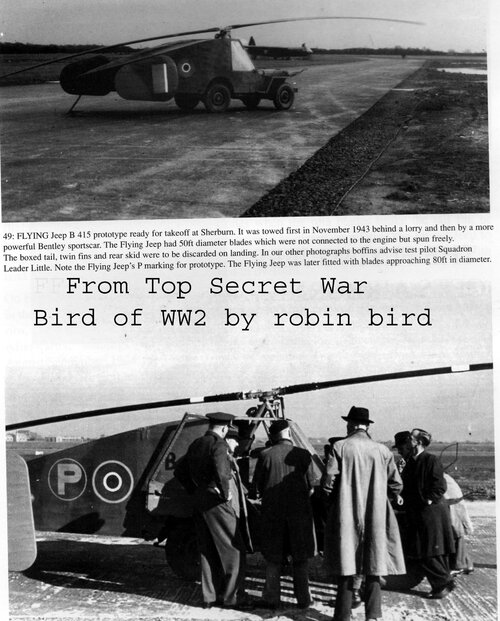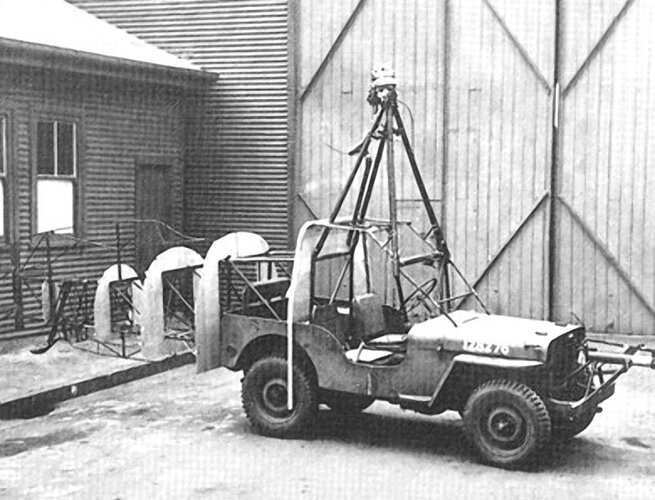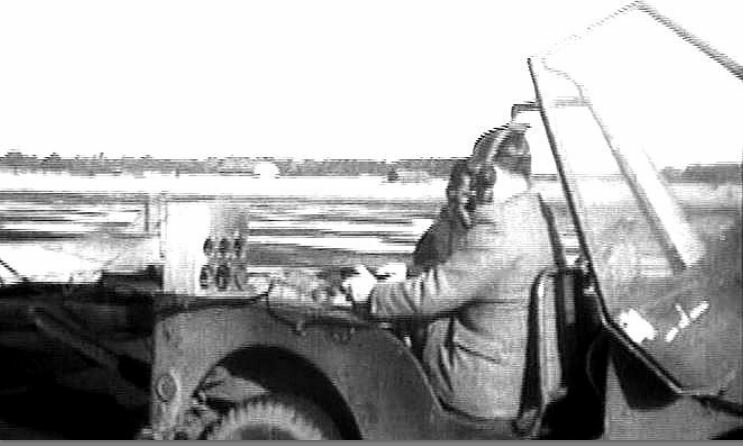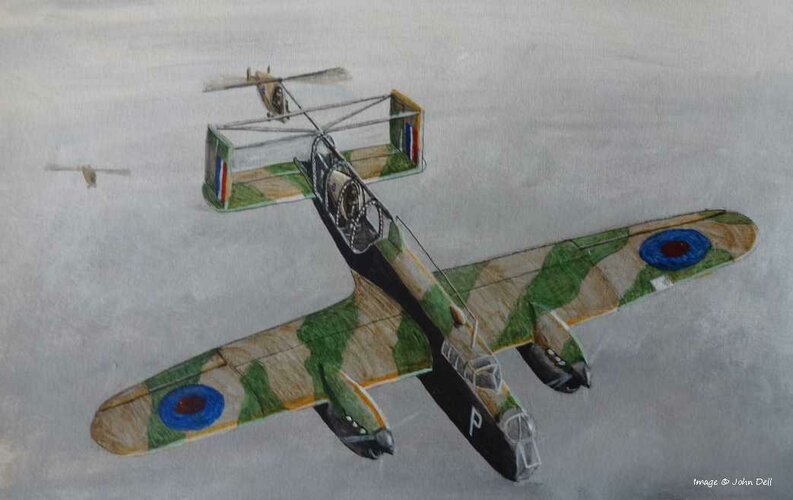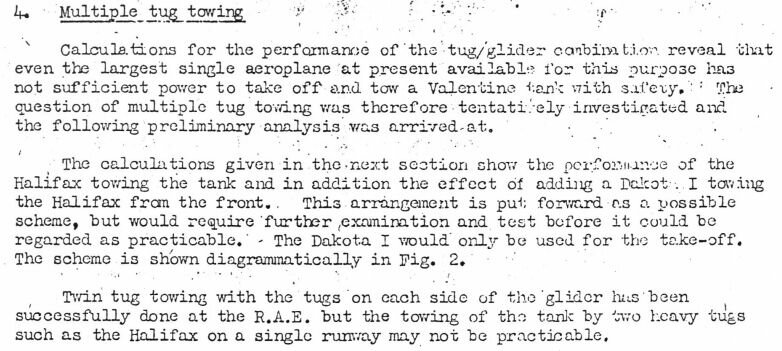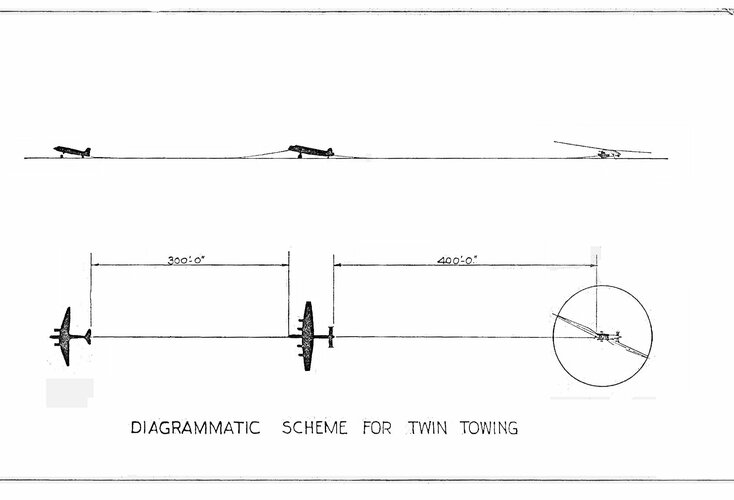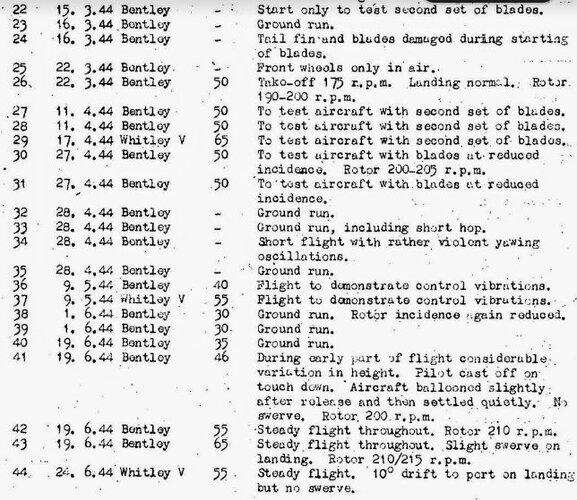- Joined
- 28 January 2008
- Messages
- 635
- Reaction score
- 512
Attached are a pair of photos of a replica of the Hafner Rotabuggy (see http://www.secretprojects.co.uk/forum/index.php/topic,4022.msg31649.html#msg31649 for period photo) taken recently at the Museum of Army Flying at Middle Wallop. It was a British experiment that took a Willys jeep and gave it a flight capability. The idea was to produce a method of air-dropping vehicles and was designed by Raoul Hafner of the Airborne Forces Experimental Establishment (AFEE). The replica on display was built by the Wessex Aviation Society.
The sole example of the Hafner Rotabuggy was also known as the Malcolm Rotaplane and the ML 10/42 Flying Jeep (Air Ministry specification 10/42 for a "Special Rotating Wing Glider"). Originally named the Blitz Buggy, it was dropped for the Rotabuggy to keep in-line with the Hafner series naming (Rotachute and Rotatank - see http://www.secretprojects.co.uk/forum/index.php/topic,1291.msg192255.html#msg192255 and http://www.secretprojects.co.uk/forum/index.php/topic,724.msg19746.html#msg19746).
Tests found that a Willys MB could be dropped from heights up to 2.35 metres (7.7 ft) without damage to the vehicle. It had a rotor was along with a tail fairing and twin fins fitted to the jeep. The design had no rudders. Two men were required to pilot the aircraft, a driver and a pilot who would fly the airborne contraption using a control column.
The first trial was conducted on 16 November 1943, with the unit being towed behind a lorry, but the vehicle could not get enough speed to put the "Rotabuggy" in the air. A more powerful 4.5 litre Bentley was used on 27 November to finally allow the machine to become airborne and in test could obtain glide speeds of 45 mph. Later tests were to be made towed behind an Armstrong-Whitworth Whitley bomber.
The tests showed that the device was prone to severe vibration at speeds greater than 45 miles per hour (72 km/h). Improvements led to the Rotabuggy achieving a flight speed of 70 mph (113 km/h) on 1 February 1944.
The last test flight occurred in September 1944, where the unit flew for 10 minutes at an altitude of 400 feet (121.9 m) and a speed of 65 mph (105 km/h), after being released by a Whitley bomber.
With the advent of larger tactical gliders that could carry vehicles (such as the Waco Hadrian and Airspeed Horsa) the Rotabuggy development was stopped and the project cancelled.
General characteristics
Length: 21 ft 0 in (6.40 m)
Width: 9 ft 6 in (2.90 m)
Height to top of rotor hub: 6 ft 9 in (2.06 m)
Main rotor diameter: 46 ft 8 in (14.22 m) [Museum info board quotes 44 ft (12.19 m)]
Main rotor area: 1,711 sq ft (159.0 m2)
Empty weight: 2,125 lb (964 kg) (Jeep only)
Gross weight: 3,110 lb (1,411 kg)
Maximum speed: 150 mph (241 km/h 130 knots)
Estimated Cruise speed: 80 mph (129 km/h 700 knots)
Rate of sink at 48 mph (77 km/h): 960 ft/min (4.9 m/s)
Rate of sink at 150 mph (240 km/h): 1,980 ft/min (10.1 m/s)
Source:
The British Aircraft Specification File by K Meekcoms and E B Morgan (Air Britain 1994) ISBN 0851302203
Nothing Ventured article by Philip Jarrett (Aeroplane Monthly October 1991)
Exhibit Information Board Museum of Army Flying (Middle Wallop Hampshire SO20 8DY)
The sole example of the Hafner Rotabuggy was also known as the Malcolm Rotaplane and the ML 10/42 Flying Jeep (Air Ministry specification 10/42 for a "Special Rotating Wing Glider"). Originally named the Blitz Buggy, it was dropped for the Rotabuggy to keep in-line with the Hafner series naming (Rotachute and Rotatank - see http://www.secretprojects.co.uk/forum/index.php/topic,1291.msg192255.html#msg192255 and http://www.secretprojects.co.uk/forum/index.php/topic,724.msg19746.html#msg19746).
Tests found that a Willys MB could be dropped from heights up to 2.35 metres (7.7 ft) without damage to the vehicle. It had a rotor was along with a tail fairing and twin fins fitted to the jeep. The design had no rudders. Two men were required to pilot the aircraft, a driver and a pilot who would fly the airborne contraption using a control column.
The first trial was conducted on 16 November 1943, with the unit being towed behind a lorry, but the vehicle could not get enough speed to put the "Rotabuggy" in the air. A more powerful 4.5 litre Bentley was used on 27 November to finally allow the machine to become airborne and in test could obtain glide speeds of 45 mph. Later tests were to be made towed behind an Armstrong-Whitworth Whitley bomber.
The tests showed that the device was prone to severe vibration at speeds greater than 45 miles per hour (72 km/h). Improvements led to the Rotabuggy achieving a flight speed of 70 mph (113 km/h) on 1 February 1944.
The last test flight occurred in September 1944, where the unit flew for 10 minutes at an altitude of 400 feet (121.9 m) and a speed of 65 mph (105 km/h), after being released by a Whitley bomber.
With the advent of larger tactical gliders that could carry vehicles (such as the Waco Hadrian and Airspeed Horsa) the Rotabuggy development was stopped and the project cancelled.
General characteristics
Length: 21 ft 0 in (6.40 m)
Width: 9 ft 6 in (2.90 m)
Height to top of rotor hub: 6 ft 9 in (2.06 m)
Main rotor diameter: 46 ft 8 in (14.22 m) [Museum info board quotes 44 ft (12.19 m)]
Main rotor area: 1,711 sq ft (159.0 m2)
Empty weight: 2,125 lb (964 kg) (Jeep only)
Gross weight: 3,110 lb (1,411 kg)
Maximum speed: 150 mph (241 km/h 130 knots)
Estimated Cruise speed: 80 mph (129 km/h 700 knots)
Rate of sink at 48 mph (77 km/h): 960 ft/min (4.9 m/s)
Rate of sink at 150 mph (240 km/h): 1,980 ft/min (10.1 m/s)
Source:
The British Aircraft Specification File by K Meekcoms and E B Morgan (Air Britain 1994) ISBN 0851302203
Nothing Ventured article by Philip Jarrett (Aeroplane Monthly October 1991)
Exhibit Information Board Museum of Army Flying (Middle Wallop Hampshire SO20 8DY)

